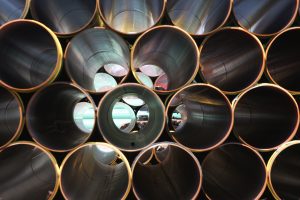To celebrate the 5th anniversary of the Paris Agreement on climate change, we revisit the “spirit of Paris” – the exceptional mobilization of the international community that led to the first globally-adopted climate agreement. In this Q&A, Philippe Diez, VP Client Development & Sales EMEA and EAJ at Schneider Electric’s Energy & Sustainability Services, reviews the key elements of this momentous global initiative, what has been done in the five years since COP21, and what challenges we still face ahead of next year’s COP26.
 Philippe Diez leads a team providing consultancy, solution development and integration services to international corporations in the field of energy and carbon management. Diez and his team help pan-European and global corporations define and drive Climate Action programs (supply and demand side) and take advantage of new market opportunities, from renewable sourcing to microgrids.
Philippe Diez leads a team providing consultancy, solution development and integration services to international corporations in the field of energy and carbon management. Diez and his team help pan-European and global corporations define and drive Climate Action programs (supply and demand side) and take advantage of new market opportunities, from renewable sourcing to microgrids.
Philippe, on the 12th of December, we will celebrate the 5th anniversary of the Paris Agreement – can you start by reminding us about its key elements?
The Paris Agreement was a historic first: a collective global agreement to address climate change that was negotiated and agreed to by almost every nation on Earth, representatives of 195 state parties at the 21st UN Conference of Parties (COP) in Paris. I will always remember the day the agreement gained consensus—12 December 2015—and the strong wave of positive communication that followed. The final agreement stated that participating nations must:
- Hold the increase in the global average temperature to well below 2°C above pre-industrial levels and to pursue efforts to limit the temperature increase to 1.5°C
- Increase the ability to adapt to the adverse impacts of climate change and foster climate resilience
- Make finance flows consistent with a pathway towards low greenhouse gas emissions and climate-resilient development.
The Paris Agreement entered into force on 4 November 2016, thirty days after minimum thresholds of at least 55 parties to the convention, accounting for an estimated 55% of total global greenhouse gas emissions, had ratified it. Today, 188 countries from the original 195 have ratified the Agreement.
What has happened since 2015? Are we on track with the goals of Paris?
 I would say, after a very slow start, the goals of the Paris Agreement are gradually coming within striking distance. Per recent data from the Climate Action Tracker group, we know that the majority of global emissions are now covered by large nations with a zero-emissions by mid-century goal (once the U.S. returns to the Paris Agreement as president-elect Joe Biden has pledged to do).
I would say, after a very slow start, the goals of the Paris Agreement are gradually coming within striking distance. Per recent data from the Climate Action Tracker group, we know that the majority of global emissions are now covered by large nations with a zero-emissions by mid-century goal (once the U.S. returns to the Paris Agreement as president-elect Joe Biden has pledged to do).
Europe is on track to outperform its climate goal of 20% reduction of GHGs by 4% in 2020, according to the European Environment Agency. This comes with the caveat that the COVID pandemic has resulted in a temporary reduction of emissions, but most of that overall figure comes from effective climate policies. The biggest source was from the EU emissions trading scheme, where emission dropped by 9.1% in 2019 compared to 2018.
China’s recent pledge to reach net zero emissions by 2060, and its promise that its emissions levels will peak before 2030, could alone reduce warming by between 0.2°C and 0.3°C by 2100.
Should the U.S. return to the Agreement as pledged, there will be further progress in sight. The U.S. is the second-largest emitter of GHGs, contributing 13.1% to global emissions. With the optimistic wave of recent political changes and decarbonization announcements, global increases in temperature could be held to 2.1°C by the end of the century at our present trajectory.
However, achieving the maximum increase of 1.5°C—which is the threshold identified by climate science as the absolute limit to avoid catastrophic effects—is still elusive and will require more rapid and deeper decarbonization. There has also not yet been enough progress on building climate resilience against the impacts of global warming (many of which we have already suffered, like extreme weather events and sea level rise). So, the progress is mixed.
The Paris Agreement includes a global “stocktake” every five years to measure collective progress. Due to a pandemic-related delay, the first stocktake will happen in November 2021. At the COP26 in Glasgow, many of the countries who first signed the Paris Agreement will come together to assess progress and remaining challenges. This will be a very important milestone to determine whether we are able to strengthen global efforts to fight climate change and attain the original aspirations of the Paris Agreement.
Schneider Electric leaders will also be at the COP26, along with many peers and other businesses pushing for strong goals. In our Energy & Sustainability Services business, we serve more than 2,700 clients across the globe—a group that is very diverse in terms of geography, size, segment and maturity of climate action. But for the vast majority of them, charting a path to a low-carbon future is a business imperative.
[Tweet “If we have the courage to envision a future that uses our crisis-response capacities towards decarbonization and resilience, the ambitions of the Paris Agreement are within reach @SchneiderESS”]
You mentioned COP26 in Glasgow – what else is on the horizon for 2021 and how has the COVID crisis impacted climate action?
The pandemic has shaken up all agendas. But, while it may have disrupted short-term plans, it also presents an opportunity for sustainability to be embedded at the core of long-term economic recovery. Rather than focus on the coincidental (and likely temporary) reduction in emissions due to the pandemic – which will have a negligible impact on atmospheric CO2 levels and warming – it is this longer-term trajectory that matters most. Trillions of investments are now being dedicated to green recovery, such as the EU’s 750 bn € Next Generation Program. And we see more signs of a massive net zero transition. Some recent examples include::
- New Political and Economic Framework Conditions
- The Rise of Sustainable Finance
- The Green Energy Transformation Accelerating
Furthermore, in its 2020 Emissions Gap report, The UN Environment Programme indicated that efforts being put forth for a low-carbon pandemic recovery could put the world on track for the 2°C pathway.
What do you hear from clients around climate action? What role are they willing to play?
The role corporates play in fighting climate change is undeniable. Companies have been a very active driver for climate action, and will need to continue to be in order to fill the emissions gap to meet the Paris Agreement’s goals. For example, Schneider Electric recently joined the U.S. Center for Climate and Energy Solutions along with 41 other companies calling for president-elect Biden and the incoming Congress to undertake ambitious climate solutions. Around the same time, we also joined more than 200 European businesses calling on EU leaders to endorse the ambition set out in the European Green Deal to raise the 2030 greenhouse gas emissions reduction target to at least 55%. These statements are indicative examples of a growing focus on climate in business strategy that has not slowed during the pandemic.
Earlier this year, we surveyed energy and sustainability professionals about the impacts of COVID-19 on their initiatives. Echoed in other available research, we found that companies are not slowing down on their sustainability and climate goals. In our survey, almost a quarter of respondents said they are using this opportunity to accelerate progress toward their goals. Many organizations are prioritizing sustainability in their return to operations. We also see this acceleration reflected in record-setting corporate actions, such as more than 1000 companies committing to Science-Based Targets (SBTs), 341 companies signing the Business Ambition for 1.5 Degree, and the more than 10,000 companies who disclosed to CDP in 2020. The best indicator for us, though, was the many engagements this year with new clients to help accelerate their journey with our climate change advisory services, from setting their target and defining a roadmap to ultimately, implementing solutions across their full value chain.
At Schneider Electric, we believe that innovation, electrification, and a transition to clean energy and digital can help us work together with our clients and partners to help solve the climate crisis. And, we aim, ourselves, to meet the goals of the Paris Agreement 10 years early.
We can recover stronger from the pandemic if we are capable of learning from it. If we have the courage to envision a future that uses our crisis-response capacities towards decarbonization and resilience, the ambitions of the Paris Agreement are within reach.
Learn more in our upcoming Climate Action webinar




